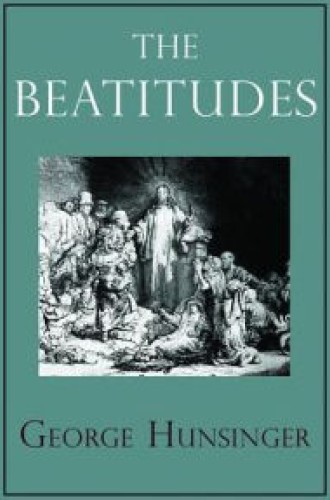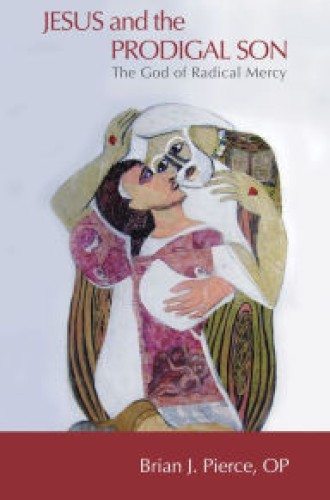A Jesus who embodies his own characters
Two refreshing new books place the storyteller within the story he tells.
Christians read and hear the Gospels expecting to encounter the voice of Jesus. Biblical scholars make a living by complicating that relationship. In accounting for processes of historical traditioning and pious elaboration, scholars distance the historical Jesus who walked upon calloused feet from the Jesus of Matthew, Mark, Luke, and John. And by insisting that a massive historical and cultural gap separates the Gospels from believers, scholars demand that Christians pause a minute before discerning what Jesus is saying to “us.”
How refreshing, then, that two new books, neither of them written by a professional biblical scholar, introduce readers directly to Jesus through his own teaching. George Hunsinger, a theologian, finds in the Beatitudes (Matt. 5:2–12) a Jesus who not only pronounces blessing upon others but also embodies the very blessings he announces. Brian J. Pierce, a Dominican friar, identifies Jesus with the Prodigal Son (Luke 15:11–32). Like the Prodigal, Jesus abandons a heavenly home, endures great hardship, and returns in glory. Both Hunsinger and Pierce draw upon biblical scholarship only selectively as they offer compelling and distinctive interpretations.
Read our latest issue or browse back issues.
Hunsinger divides the Beatitudes into two groups: four that speak to the needy and four that call the faithful to embody certain virtues. The final Beatitude, which involves persecution, comes in two steps: persecution for pursuing righteousness and persecution directed specifically at Jesus’ followers. Each of the book’s corresponding nine chapters begins with a reflection on Jesus, who himself embodies and defines the blessing under consideration. Hunsinger proceeds to explore each Beatitude’s implications, first for believers and then for those beyond the circle of discipleship.
Beyond this common framework, each chapter has its own distinct structure. Readers encounter meditations upon exemplary Christians, the recognition that creation itself hungers and thirsts for justice, and a deep reflection on the power of the sacraments to purify us. Hunsinger offers an impressive stream of surprising and edifying thoughts, all grounded in his focused approach to Jesus and the Beatitudes.
Other interpreters have also divided the Beatitudes into sets of four identities and four vocations, and it may be the case that Hunsinger’s choice has more potential than he realizes. One critical question about this passage involves its audience: only Jesus’ disciples follow him up the mountain (5:1), yet somehow the crowd overhears his teaching (7:28–29). So it’s not clear whether Jesus’ teaching applies only to disciples or to all people. This factor comports remarkably well with Hunsinger’s decision to open each Beatitude both to Jesus’ disciples and to an outer circle. Moreover, the Beatitudes introduce the entire Sermon on the Mount. Might not those first four blessings function as an invitation for hearers to identify with Jesus and his way, and the last four as the epitome of what it means to follow this path?
Pierce’s book is a bit more meditative, a little less structured, and somewhat more of an interpretive reach than Hunsinger’s. It’s also a lot more personal. Pierce shares an encounter long ago with a biblical scholar who dismissed his reading of the Prodigal: “Impossible! The prodigal son in the parable is a sinner and Jesus was without sin.” Over time and through his encounters with various people, Pierce came to own his own insights. It’s not that Jesus himself sins—he does in fact identify with sinners—but rather that God made Jesus to be sin for our sake. He dies a sinner in the eyes of the world, but in the resurrection he “is finally revealed to us as the Savior of the world.”
Parables, Pierce argues, are meant more to provoke than to be solved, and this particular parable “is broad enough” to host multiple interpretations. His reading of the parable extends beyond the terms of its one little story to embrace the entire narrative of God’s love for humanity, especially in the incarnation. The younger brother who departs from his comfortable home evokes Jesus’ condescension from his heavenly home to dwell with mortals. But it also evokes the wanderings of Israel, of the church, and, well, of everyone. Jesus leaves home not to break relationship with his Father but to share his inheritance with all of us.
Like Hunsinger, Pierce offers many fresh insights and pressing questions. Jesus’ table fellowship stretches into the radical hospitality of the Eucharist. The Prodigal’s period of alienation functions as a lesson on Jesus’ descent into hell “to search for lost sheep.” Jesus the returning/risen Prodigal becomes a wounded healer who brings reconciliation and wholeness to all people.
A biblical scholar might object that Pierce and Hunsinger impose upon these passages considerations that are alien to the text. One might especially complain that on occasion Pierce veers frighteningly close to familiar anti-Jewish stereotypes of Jesus’ run-ins with his opponents. I would argue that both books raise critical questions about what constitutes faithful interpretation. Both authors begin with very high Christologies that emphasize Jesus as the center of Christian revelation and persist in a full-throated affirmation of the incarnation. Ultimately, the aim of interpretation for both Pierce and Hunsinger is not to distill a lesson or two from the text but rather to open space for an intimate encounter with Jesus.
Critical biblical scholarship might function as a helpful consultant to Hunsinger and Pierce. More could be said about each of these classic biblical stories; occasionally one might wish for less. On balance, however, biblical specialists have more to learn from these two synthetic, theologically attuned readings than to add to them. I look forward to recommending both books for use in church and among friends.







